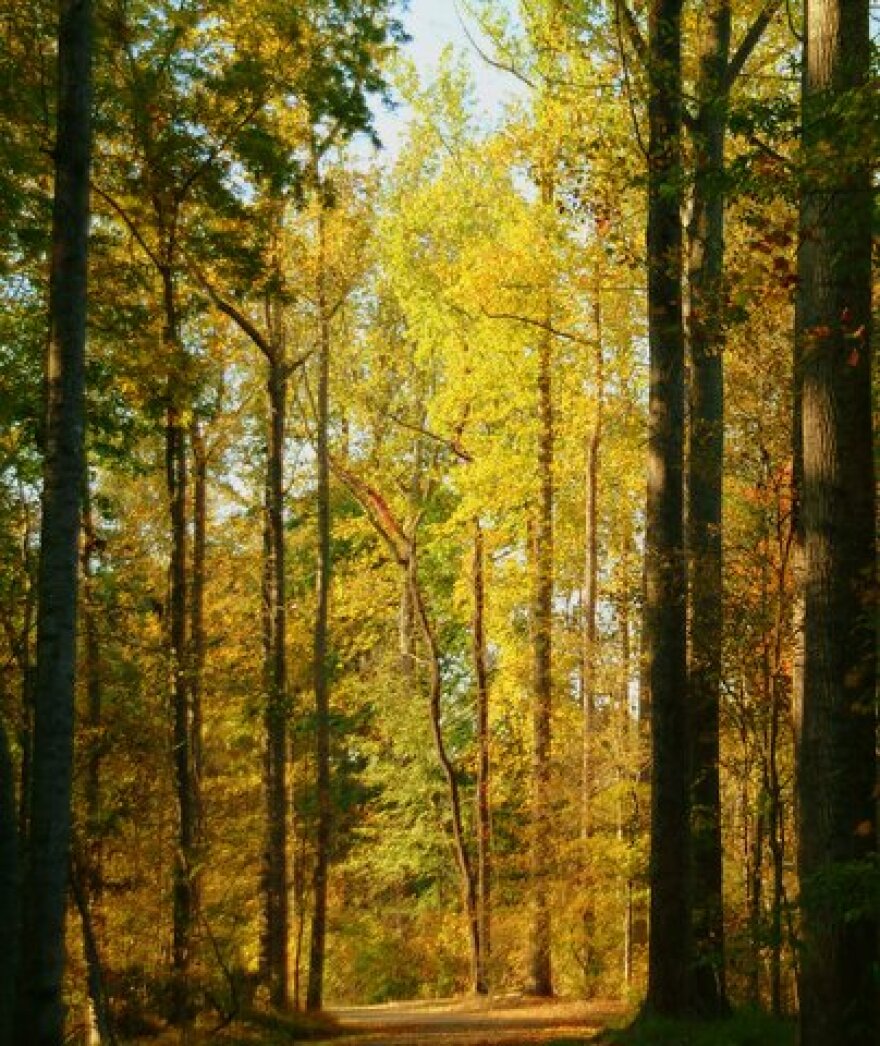Aside from the fact that Raleigh has a smartphone app for its greenways, the most impressive thing about its trails might be that so many of them are connected. Instead of a dribble of pavement here and there, the Capital Area Greenway System forms a giant loop around the city with several offshoots. There are sections where you can ride a bicycle over 30 miles without leaving a paved trail.
According to Chris Snow, director of Wake County Parks, Recreation and Open Space, connectivity is key. “I think when a lot of these greenways got started, it was like, you build a strip here and you build a strip there,” he says. “We’re starting to see a lot of these short segments now being connected. You’ve got these long-distance opportunities around here.”
While Raleigh’s 99-mile trail system is Wake County’s most robust and well-connected example, each of the county’s 12 municipalities has their own trail system. Smaller towns, like Morrisville and Wendell, have less than one mile of them, but no matter how short, all are listed in Wake County’s trail map.
Cary has approximately 65 miles of trails and, according to Cary Parks, Recreation, and Cultural Resources director Doug McRainey, is busy planning for more. Yet the more they build, the more residents demand.
“As you build, you expand the number of users, and the demand increases,” says McRainey. “People love them. We put in a few trails and thought that would buy us some time, but people want more.”
Greenways as parks

People use Wake County’s trails for personal recreation, to commute to and from work, to walk their pets, and for other activities, but the most valuable aspect of the county’s trails might not have anything to do with people. Vic Lebsock is the senior greenway planner at Raleigh Parks and Recreation, a position he assumed in 1989. For him, the most important purpose of the greenways isn’t recreation or even the quality of life it adds to a place.
“I view our Greenway system first and foremost as a preservation of the environment,” he says. “And its second purpose is to give the public an opportunity to learn about it and to give people a respite from everyday life.”
Chris Snow is also quick to recognize their importance as preservational corridors. “Greenways not only allow people to get from one place to another, but wildlife use them, too. You actually have these ribbons of green that connect these areas, these wildlife corridors,” he says. Birds use them in their migratory routes, and land animals such as foxes, deer, rabbits, snakes, and box turtles also make use of the greenways.

The entire greenway system began in the late 1970s as a way to preserve watersheds and protect sources of drinking water. That’s why so many trails follow rivers. A good example is the Neuse River Trail, a 28 mile corridor that acts as a central spine of the Capital Area Greenway. At the end of this month, the city of Raleigh will offically dedicate a newly completed portion of the trail, which was constructed as part of a larger plan to preserve land in the Neuse River flood plain. Once land had been acquired by the city to preserve the river basin, Raleigh residents voted overwhelmingly to spend $15 million on an asphalt greenway beside the river.

Cary’s longest and most popular greenway, the Black Creek Greenway, is another example. It connects Cary’s Bond Park to Lake Crabtree. From the lake, you can hop on the the Reedy Creek Greenway that heads southeast and leads to the North Carolina Museum of Art, winding through a sculpture park. Eventually, the beginning of the Black Creek Greenway will connect to the American Tobacco Trail, which will provide a paved path all the way to downtown Durham. Here's a detailed map of the greenway and its connections.
Wake County’s 2008 Master Plan outlines a goal of converting 30% of the county’s land area – 165,000 acres – into park space. Snow says they’re up to about 60,000 acres so far, not including undeveloped private land, and plans for more greenways will help them work towards that goal. He also also says that it matters to Wake County residents that they feel like they're not in or next to a big city.
“I think the big thing for us is, whether you’re in a greenway in the city of Raleigh or Cary or on the American Tobacco Trail that runs through Wake County, you really get the impression that you’re out. You don’t feel like you’re walking through a neighborhood or somebody’s back yard,” he says. “You want folks to feel like they’re out in nature, like they’re out for a walk in a park.”

Someone once described Raleigh as “ a park with a city in it,” a phrase the city has embraced and even included in its own Parks Plan. Given the enthusiasm for greenways across Wake County, that phrase might ring true for its other municipalities, too.
This month, WUNC is taking a look at greenways and trails in the Triangle region and Greensboro. Do you have thoughts about greenways or trails in the area? Share them with us in the comment section below or on Facebook.









